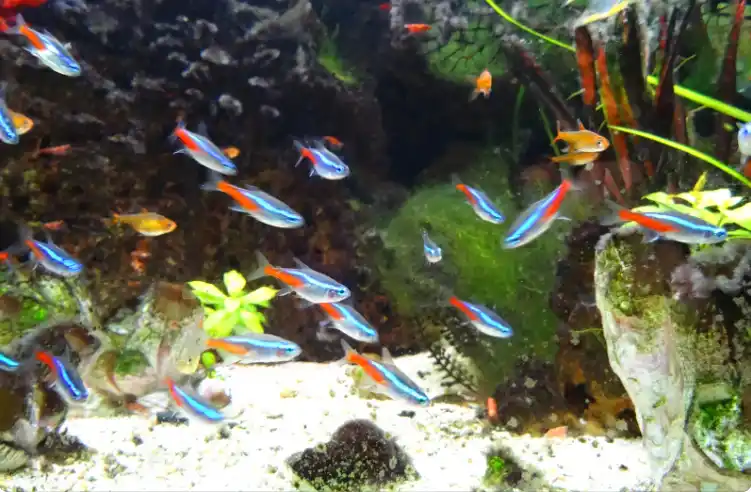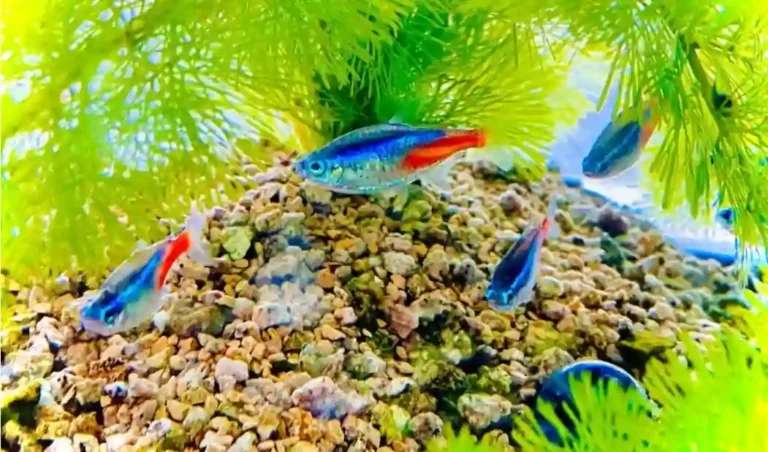How to Get Rid of Algae in tetra Tank? [Experts Secret]
Algae growth is just something you will have to deal with if you have a fish tank. It’s not necessarily bad since little critters like tetras love munching on the stuff. But if you let it get out of control, things start getting hairy.
If you have too much algae, it will mess with the quality of the water in your tank, which can really mess up your fish and plants, like insufficient oxygenation, dying plants, and unhappy fish.
How to Get Rid of Algae in tetra Tank? You can keep low sunlight in the fish tank and switch off the fish tank light at noon time. Keep changing the water regularly is another trick. Also, you can use UV light to kill algae in your fish tank.
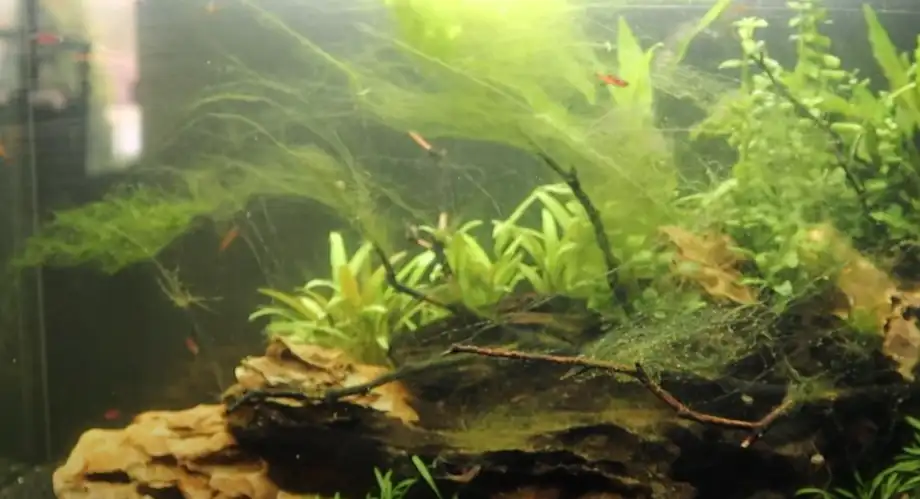
You must stay on top of things if you want to keep your tank looking and feeling great. There are a bunch of different solutions you can try out, so don’t stress too much. Just going to find what works for you.
Table of Contents
How to Prevent Algae in Tetra Tank?
So if you want to get rid of algae and make sure they don’t come back, you should understand how these little algae work.
Algae are basically like plants; they need specific stuff in their environment to grow and thrive. If you remove those things, they’ll either die off or stop causing so much trouble in your tank.
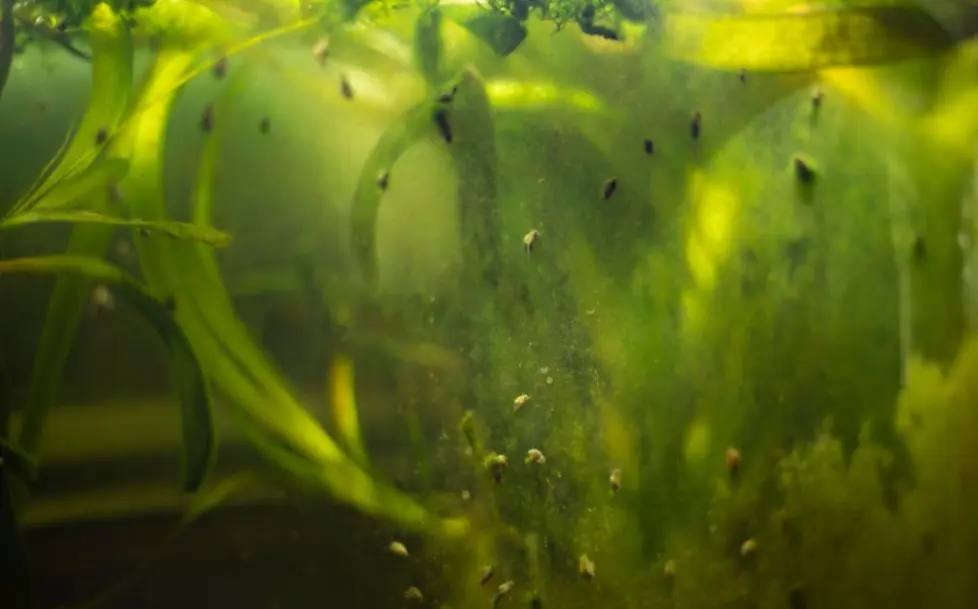
Let’s talk about how to keep those pesky algae under control. Here are some tips:
- Don’t Overfeed Your Fish
Seriously, guys, this is important. Giving your fish too much food will just sit there and rot, making a mess of your tank. Plus, your fish will end up pooping way more than they should, and that’s just going to make things even worse.
Algae love that kind of stuff, so try not to give it to them.
Overfeeding can also make your fish sick and raise the ammonia levels in your tank, which nobody wants.
So just give your tetras one or two meals a day, and only give them as much as they can eat in about a minute. They’ll be happy and healthy, not contributing to your algae problem.
- Dim Your fish tank Light
Algae are like little plants, and they need good lighting to grow. So if you don’t give them enough light, they won’t be able to take over your tank like they usually do.
That’s where your aquarium lights come in, they can be a little too bright for your fish, and they’re brighter than what tetras are used to in the wild.
If you want to try something different, you can dim your lights or even turn them off altogether. Your fish won’t mind, making it harder for algae to thrive. Plus, if you have fake plants in your tank, they will still look great, even without the extra lighting.
So, this is one more way to keep your tank looking clean and healthy.
- Keep Changing Your fish tank Water Regularly
Water changes are essential for keeping your tetras happy and healthy and a great way to control algae growth. Depending on how many tetra fish you have and how big your tank is, you should aim for a weekly water change.
But be careful not to overdo it. You only want to change about 20-30% of the water at a time. If you change too much water, you can actually mess up the balance in your tank and make things worse.
When you change too much water, you can eliminate the good bacteria that help keep algae under control. Plus, it can mess with your tank’s pH levels, which nobody wants.
Get Some Fast-Growing Plants If you want to keep your tank looking nice and prevent algae from taking over, consider adding some fast-growing plants to your setup.
These plants will suck up all the extra nutrients in the water that algae would normally feed on. Plus, they’ll give your tetras a nice place to hide and play.
So there you have two more tips for keeping your tank clean and algae-free.
tinyfishtank.com
- Use Fast Growing Plants
Using fast-growing plants is an excellent natural solution for controlling algae growth in your aquarium. Plants and algae require the same nutrients, so they compete for food and space.
If your tank has many healthy plants, they will consume more nutrients from the water, depriving the algae of what they need to thrive.
Some plants, such as hornwort and wisteria, are especially effective at countering algae growth. These plants overgrow and can outcompete algae for nutrients and space.
Another advantage of having thriving plants in your aquarium is that they can create shade, which will limit the amount of light that reaches the algae. Since algae require bright light to grow, reducing their exposure to sunlight will slow down their growth and spread.
You can add more floating plants to the fish tank. Floating plants are the best solution for getting rid of algae growth. Floating plants can block sunlight perfectly and make shades amazingly. So try to add more floating plants into your fish tank.
Floating Aquatic Plants For Aquariums
- Duckweed
- Amazon Frogbit
- Red Root
- Dwarf Water Lettuce
- Floating Fern
- Salvinia Cucullata
- Vacuum the Substrate Regularly
Cleaning the substrate can be done using a siphon vacuum or gravel vacuum. These tools help you remove the gunk, waste, and debris sitting in the substrate, which can contribute to algae growth.
But be cautious not to remove too much of the substrate. Beneficial bacteria in the substrate help break down waste and toxins, creating a healthy environment for your tetra fish. Over-cleaning can disturb the balance and lead to more problems.
In addition to vacuuming, you can consider adding substrate cleaners to your tank. These products contain beneficial bacteria that break down waste and excess nutrients, keeping the substrate clean and reducing algae growth.
- Perform Regular Filter Cleaning
Keeping your filter clean is essential to keep your tank free of algae. Algae thrive on nutrients, and when your filter is dirty, it can create a breeding ground for the bacteria that produce those nutrients. But don’t go too crazy with cleaning.
Your filter is home to beneficial bacteria that help keep your tank healthy. Over-cleaning can disrupt this ecosystem and cause imbalances in your tank’s chemistry.
Instead, use tank water to clean your filter and focus on removing visible debris that could clog the filter.
- Adding algae-eaters to the fish tank
Adding algae-eating aquarium creatures to your tank is a great way to control the algae population. Many fish, including tetras, love to munch on algae.
You can also add bristlenose plecostomus, Siamese algae eater, otocinclus catfish, twig catfish, and other species known for their algae-eating habits.
For even more effective algae control, consider adding nerite or apple snails and various species of tank shrimp. These creatures will consume algae naturally, requiring little effort on your part.
However, it’s important to note that there’s a limit to how many algae eaters you can add to your tank. Overcrowding can cause problems, so make sure you add the right amount of creatures for your tank’s size and population.
Is Algae Bad for Tetras?
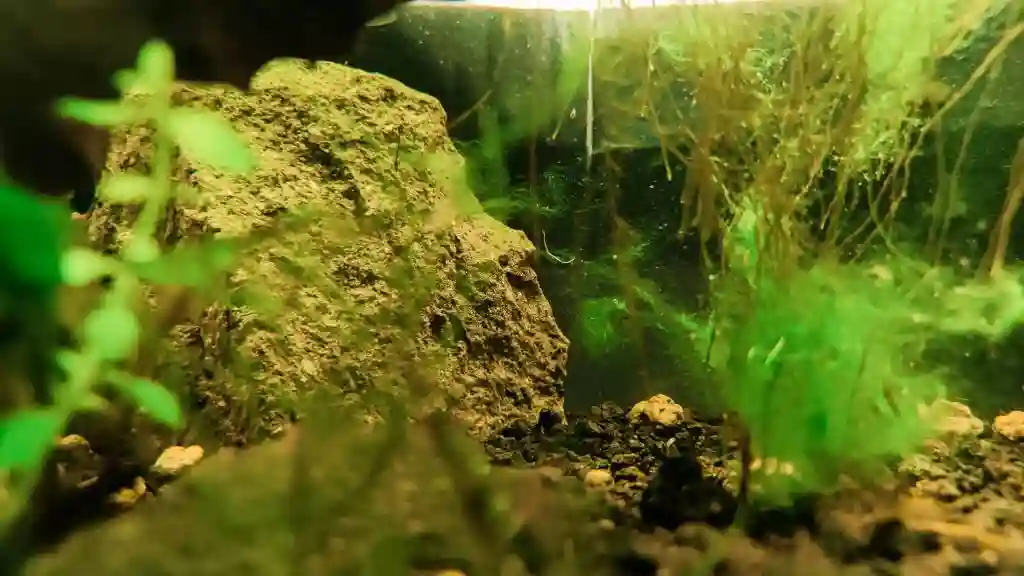
No. Algae are not bad for your aquarium at all.
Algae are similar to plants and rely on photosynthesis to survive, which is pretty cool. Tetras even enjoy eating algae as part of their regular diet.
However, too much algae growth can become a problem if it goes out of control and takes over the tank, suffocating the environment. So, the key is maintaining a healthy balance to ensure that tetras and algae coexist peacefully in your aquarium.
Conclusion
In conclusion, dealing with algae growth in your aquarium isn’t as daunting as it may seem. You can keep your tank clean and healthy by implementing a few simple strategies.
It’s important to remember to perform regular water changes, clean your filter regularly, and introduce algae-eating creatures to your tank.
Live plants are also an excellent addition to any aquarium, as they can help inhibit algae growth and provide a beautiful, natural environment for your fish. With these tips, you can enjoy a thriving and beautiful aquarium with minimal hassle.
Related Articles: –
https://www.tinyfishtank.com/why-do-glofish-tetras-keep-dying/
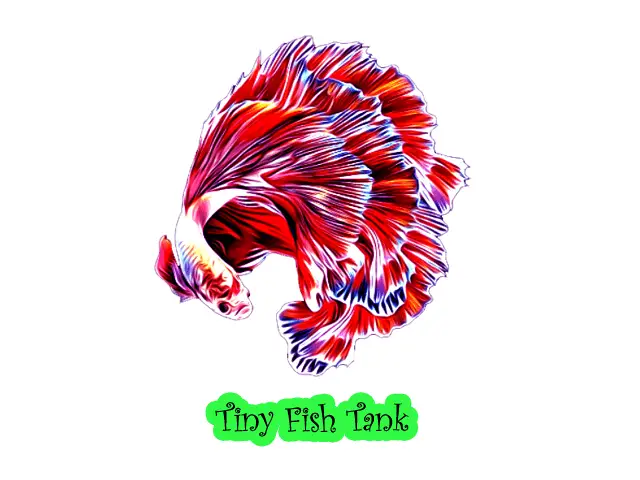
![Why Do Tetras Chase Each Other [5 Reasons & Solutions]](https://www.tinyfishtank.com/wp-content/uploads/2023/03/Why-Do-Tetras-Chase-Each-Other-768x453.webp)
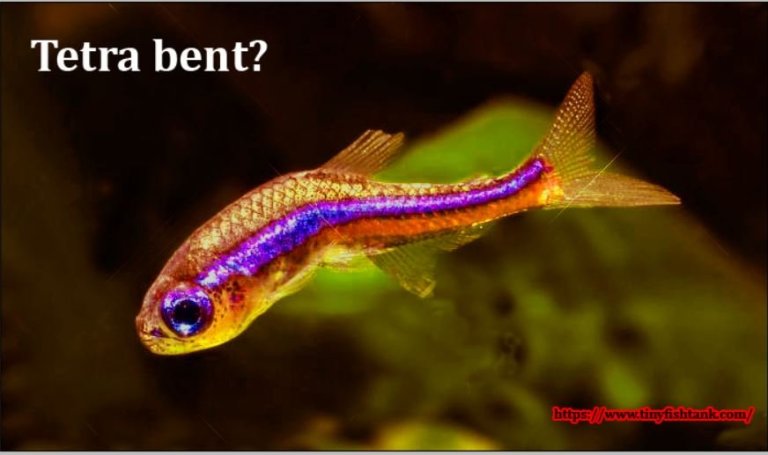
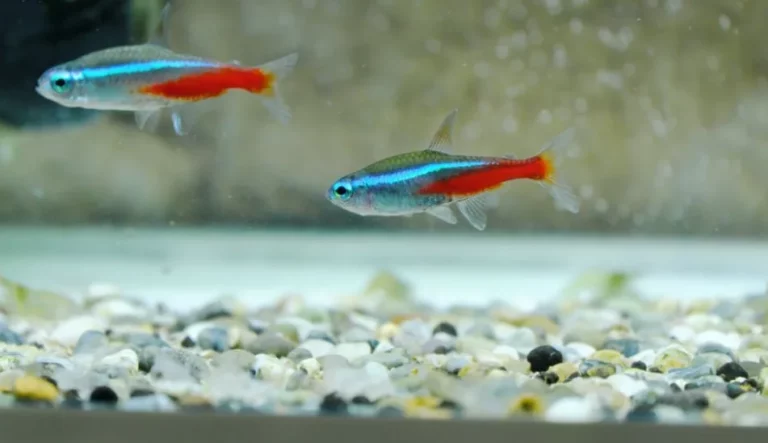
![How Many Tetras Should You Keep Together? [4 Tips To Keep Together]](https://www.tinyfishtank.com/wp-content/uploads/2023/03/How-Many-Tetras-Should-You-Keep-Together.webp)
